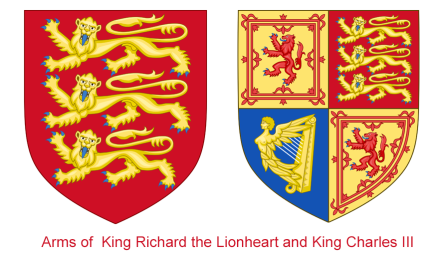There are many ways you can share you family history information with others. Some poeple are happy to share with the whole world on one of the big data repositories like Ancestry, while others want a private site, for family members only, that they can control completely. Suprisingly, even within the definition of a ‘family history’ site, the type of information and capabilities you may want to show can be very different – some people only want to show a three or four generation descendent’s chart while others want reporting pages with data for every family member, some want a story based site where they can post longer articles with family legends and remeniscences while others want a community where people with similar interests can share research.
With so many options available, where to start?
This will be a series of articles looking at how you can build a site with many of they different features just mentioned. But we have to start somewhere, so we will start with the biggest single phenomenon to hit the internet in years – WordPress.
What Is WordPress?
WordPress is a software tool you can add to a website that makes running the website much easier. It helps you change the design and features of a site without having to know any code. It makes things so easy that, these days (Dec 2021), it is claimed that over 39.5% of all websites run on WordPress!
Many new websites come with WordPress installed automatically or at least offer you the option of adding it easily when you first set up the site. But, lets take a step back and explore how you can get a website in the first place… So I am going to skip over how to get a website and install WordPress for now (we will cover that in another article) and start from the point where you have a shiny new WordPress site ready to go.
Choosing your WordPress family history site plugins
Turning a blank new site into your dream family history hub starts with choosing a plugin. Plugins are little extra pieces of code that can add additional features and tools to your site on top of the basic WordPress features.
There are a few genelogy plugins listed on the WordPress plugin library (known as the ‘Repository’, Some of these work with third party websites to ‘pull’ data or share it from the site where you have created your family records and into your WordPress instance. An example of this is the ‘TNG WordPress Integration‘ plugin that works with The Next Generation website. However, if you want to host and control your data youself, then plugins like TreePress and WPGenealogy are the way to go.
Quick Tip: Before installing a plugin check the ‘Last Updated’ information on the right hand sidebar – many genealogy plugins have ceased active development and it’s probably best to skip these.
Finding and Installing Your Genealogy Plugin
The simplest way to install a plugin is to find it from within your WordPress admin screen as it’s then just a simple two click process.
- Log in to your site
- Find the ‘Plugins’ menu item in the left hand side bar
- Click ‘Add New’ and search for ‘genealogy’
- Select the plugin you want from the list
- Click ‘Install’
- Click ‘Activate’
And that’s it! Some plugins may also ask you to opt into their newsletter or training emails or provide anonymous usage data – they all differ – and you can choose to participate or not depending on your own preferences.
After that you will need to add your data. Most plugins allow you to create single family member’s one at a time. Some offer the option to import data from another family tree program using the specialist genealogy format called ‘Gedcom’. Sometimes this requires a premium version of the plugin.
Exactly how you create family members and import data will again vary from plugin to plugin. I will go through some specifics in future articles, but for now, let’s take a look at my two favourite plugins and see how they differ.
Which Family Tree Plugins Are Best?
Currently the most popular plugin on the WordPress repository is TreePress, with over 1000 active users. A brand new option is WPGenealogy. I like both of these and in the interests of full disclosure I should say that part of the reason is that I had a hand in their development. However, bias aside, I do think they offer some great features.
What is the main difference between TreePress and WPGenealogy?
TreePress is principally designed to allow you to display a family tree in your website. Just that – insert a tree anywhere on a Page or Post. It does have some click through reports to give more details on family members, but mostly it’s just about the trees (charts).
WPGenealogy is more like a mini family history site-within-your-site. It focusses more on the data – showing a list of family members from which you can access report pages – and then as a part of these reports, it can show you charts illustrating the family relationships for that person.
In a nutshell, TreePress is charts first, WPGenealogy is reports first.
TreePress – the Leading WordPress family tree plugin
The free version of TreePress comes with a default descendantcy chart which shows a family tree from an older ‘root’ ancestor down to younger descendents. If you are just starting out on your online journey then this is the most basic type of tree and the one most people want to get started.
There are some limitations with the free version of the plugin. First you can only display records for up to 200 people. That should be fine for a majority of people, but if you already have more than that in your research, you may need the Premium version of the plugin that allows for unlimited family members at $4.99 a month (cheaper with annual or lifetime licences). Upgrades are easily done from with the Account tab in your WordPress back end.
The Premium version also enables you to add photos to your family chart and to change some of the style. Finally, it also gives you the ability to import Gedcom which is vital for larger family databases.
TreePress also has a few nice additional add ons for those with particular needs. The most popular is their ‘Charts‘ add on which gives you a much greater variety of charts – for example ancestor charts that show your partents, grandparents etc starting from a younger family member and working ‘backwards’ plus charts for couples, showing the family of both sides. This add on also gives you a lot of control over fonts, colours, line styles etc. Another fun add on is ‘Animals‘ that allows you to change the name of fields to suit different animal species – eg Father and Mother can be changed to Sire and Dame or whatever the correct term is for the species you want to chart. Great for dog breeders!
As I mentioned, TreePress is mainly about displaying charts, this means that it is not designed to hold a lot of family information other than the essentials of birth, marriage and death dates which are needed to build a chart. I will, however, create family reports that show the information it does have as normal web pages and a nice features is that these can be accessed by mousing over the image of your ancestor in a family chart and clicking a small ‘book’ icon.
WPGenealogy – a Different Approach to WordPress Family History
WpGenealogy was created in response to demand for an all in one family history website solution. Rather than just showing a chart and then you building your own content pages around this, WPGenealogy creates a self-contained micro-site withing your WordPress installation that is completely seperate from your standard Pages and Posts. This comes with it’s own ‘Theme’ styling and a whole suite of built-in tools that make it a powerful solution for those who want a whole family history portal.
Once you enter the portal from a link on your ‘main’ site you will see a list of surnames and some basic statistics showing which names are the most common in your family. Clicking on a name will take you to a list of all family members with that surname and from there you can select a person of interest to you.
Once a person is selected, a profile page pops up showing you all the information on that individual. It also provides links to both ancestor and descendent charts which will start with the person in the report, a relationship calculator, a timeline for events in the person’s life and a ‘Suggest’ button so site visitors can suggest corrections and improvements to your date.
WPGenealogy also comes with built in security allowing you to restrict access to your data only to registered and logged in users.
As with most plugins, there is a premiumversion – in this it will allow you to add unlimited family members (the free version can only show 200). It will also let you add multiple different families so you can keep data seperate – this could be great if, for example, you are a professional genealogist wanting to show research to different clients.
As a new plugin, WPGenealogy does not yet have a suite of add ons, but the developers are planning to add some useful genealogical features such as Sources and Repositories, Merge and Dedupe, LDS Tags and more.
Conclusion
Building your family history website on WordPress brings a number of advantages over submitting data to one of the big genealogy sites. For a start, you are in total control – if you want to create a priavte site with access only to family members you can. If you want to move your data to another host or take if offlilne entirely you can. If you want to create an open community with shared photo galleries and discussion forums, you can. The range of tools and add ons for WordPress mean that almost any type of site you can imagine, is possible. Naturaly that also includes displaying reports and family trees and hopefully this introduction will get you started. In future we will provide more detailed guides to specific aspects of your site, ranging from set up to security and from charting tools to photo albums.
About the Author
[simple-author-box]






